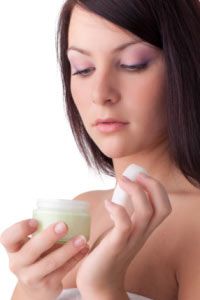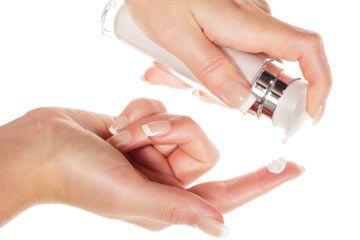Moisturizers keep the skin soft and supple and soothe away cracked and irritated skin. But did you know that some of the creams that keep you from feeling like a reptile actually come from, well, a reptile? Take a closer look at the list of ingredients on your favorite skin cream and you just may be surprised to find one or two animal-based items in the mix. Actually, it used to be easier to spot those animal-based items. At one time, many ingredients had the word "animal" included in the name, but now, instead of seeing "animal collagen amino acid" on the label of a bottle, you're likely to just see "collagen amino acid." [Source: Winter]. Let's take a look at just what might be residing in your moisturizer.
Many skin creams on the market contain animal oils and fats. Tallow, a common ingredient in moisturizers and soaps, comes from the fat of sheep and cows. It's often used as a thickener in lotions and creams.
Advertisement
Stearic acid, another ingredient that comes from animal fat, is used as an emulsifier in many lotions and creams. It helps hold ingredients together that do not easily mix -- such as oil and water. You'll also find stearic acid in pre-packaged creamy edible spreads, like margarine and icing.
Other fats and oils you might come across in moisturizers include fish oil (from the fatty tissue of fish), mink oil (from the fat layer under the skin of mink), turtle oil (from the genital glands and muscles of sea turtles) and lanolin (from the oil glands of sheep). These serve as emollients, which help to smooth the skin by temporarily filling in surface cracks and gaps, and reduce the amount of water that evaporates from the skin's surface. Many of these oils have similar properties to the oil (sebum) your skin produces already.
Amino acids, another common animal ingredient, are used in moisturizers because they're small enough to penetrate deeply into the skin. Amino acids are also humectants (they attract and bind to water molecules), which keep your skin moist and help to keep the moisturizing cream itself from drying out. [Source: Rawlings].
Moisturizers also might contain proteins (made up of amino acids), like elastin and collagen. These amino acids come from the connective tissue in animals and act as a barrier to help lock in moisture. They can also work as emollients to smooth the skin's surface
You're also likely to find a few enzymes in your moisturizer. For example, lactoperoxidase, an enzyme obtained from milk, is used as a preservative because it's effective at killing bacteria. Other surprising animal ingredients include urea (a water-attracting compound found in urine), beeswax (wax from a bee's honeycomb that is used as an emulsifier), royal jelly (the substance bees feed to their larvae, which contains proteins, fats and carbohydrates) and hydrolyzed silk (broken down silk protein that acts as a moisture barrier and skin conditioner).
To find out more about moisturizers and animal products used in the cosmetics industry, explore the links that follow.
Advertisement

